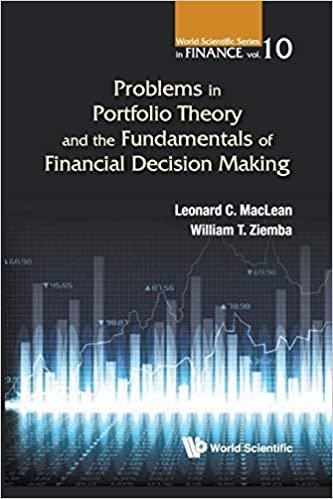Answered step by step
Verified Expert Solution
Question
1 Approved Answer
CAPITAL STRUCTURE AND DIVIDEND PAYOUTSThe board of directors of Angelina Corporation met today to discuss the capital structure and dividend policy of the company. The
CAPITAL STRUCTURE AND DIVIDEND PAYOUTSThe board of directors of Angelina Corporation met today to discuss the capital structure and dividend policy of the company. The board discussed the capital structure of percent debt and percent equity. During the meeting it came up that debt provides tax benefits to the firm because interest is tax deductible whereas dividend is not. But the debt ratio of percent was not supported by some board members. One board member, Robert Smith wanted the capital structure to be debt and equity because he believes that a high debt ratio increases the financial risk of the business. Jeff Warren, the CFO of the company, stressed in his presentation to the board that debt can put pressure on the firm because interests and principal payments are fixed obligations that the company must pay, no matter the profit of the company. He stated that if these obligations are not met, the company may risk some sort of financial distress and files for bankruptcy. Jeff continued to explain that if the company files for bankruptcy there are direct and indirect costs as well as agency costs that the company must incur.Alexis Bailey, another board member suggested that there are ways to reduce the cost of debt by hiring an expert to handle the companys debt agreements between the shareholders and bondholders. She stated that protective covenants are incorporated as part of the loan agreement and must be taken seriously because a broken covenant can lead to default. She believed that costs of debt can be reduced with negative covenants also called restrictive covenants and positive covenants. John Miller, the Investor Relations Officer stated that one reason bankruptcy costs are so high is that different creditors and their lawyers contend with each other. He suggested that if debt can be consolidated, or if bondholders can be allowed to purchase stock of the company bankruptcy cost will be reduced. In this way, stockholders and debtholders are not pitted against each other because they are not separate entities. He cited examples in Japan where large banks generally take significant stock positions in the firms to which they lend money.The employee representative on the board, Ms Johnson used the agency costs to explain that when a firm has debt, conflicts of interest arise between stockholders and bondholders. Because of this, stockholders are tempted to pursue selfish strategies. These strategies are costly because they will lower the market value of the firm. Philip Suzuki, director of Marketing and a board member was of the view that determining optimal debtequity ratio is not an easy task and varies across industries so the company should follow the rules of the peckingorder theory when financing capital projects. No agreement was reached on the companys capital structure, but the CEO and Jeff believed that the debtequity ratio discussed in the previous week will minimize the cost of capital and improve the value of the firm.The board is retaining you as the financial consultant to assist with the companys capital structure and dividend payout decisions. The Chairman of the board wants you to address the following questions: List three advantages and two disadvantages of the debt ratio proposed by some of the board members. State two examples each of direct costs, indirect costs and agency costs associated with financial distress that Jeff stated in his presentation to the board.Explain the following cost reduction techniques suggested by Alexis and John Miller.positive covenantnegative covenantdebt consolidationa Explain the rules of peckingorder theory of capital structure as suggested to the board members by Mr Suzuki, the director of Marketing.The company is planning to raise $ million to finance an expansion project. The company has $ million retained earnings deposited in checking and money market accounts. The company can borrow money up to $ million from the bond market. Based on peckingorder theory, how much money should the company raise from equity financing?List three implications of the peckingorder theory.Angelina Corporation is planning to pay dividends to shareholders next year. Suggest three types of dividends that the board can consider.Instead of paying dividends, the firm may use the cash to repurchase shares of its own stock. Why should Angelina Corporation choose to repurchase its own stock over payment of dividends?Angelina Corporation has sufficient cash of $ million and is considering other alternatives to dividend payment mainly because of unfavorable tax treatment of dividends. Explain four alternatives to a dividend payment to the board.Amber Bista owns shares of Angelina Corporation. He anticipates a decline in the stock price because of the sudden death of the CEO, and a rise in inflation. But because of rising economic growth and favorable GDP figures, he is not certain of the direction of the companys stock. He wants to use options to hedge his investment risk. Unfortunately, he does not understand options.i Explain a call option and a put option to Amber.ii Explain the circumstances under which Amber will want to buy each of the options.
Step by Step Solution
There are 3 Steps involved in it
Step: 1

Get Instant Access to Expert-Tailored Solutions
See step-by-step solutions with expert insights and AI powered tools for academic success
Step: 2

Step: 3

Ace Your Homework with AI
Get the answers you need in no time with our AI-driven, step-by-step assistance
Get Started


